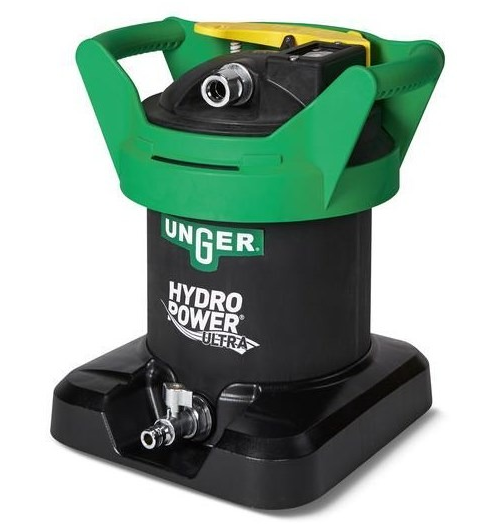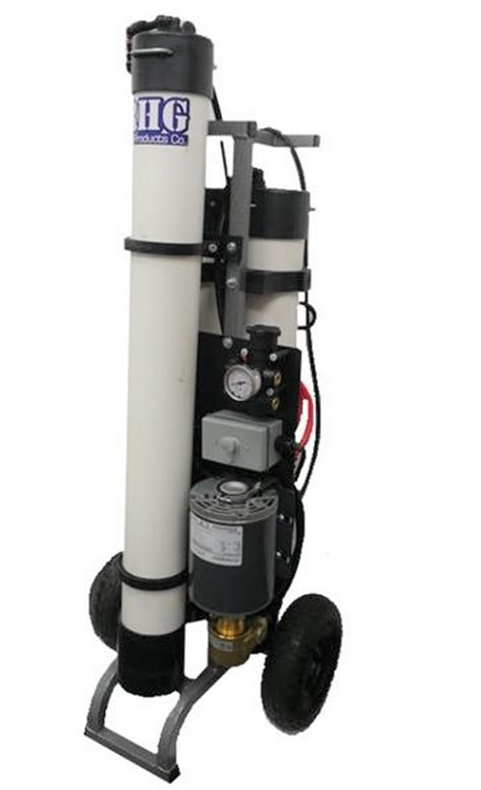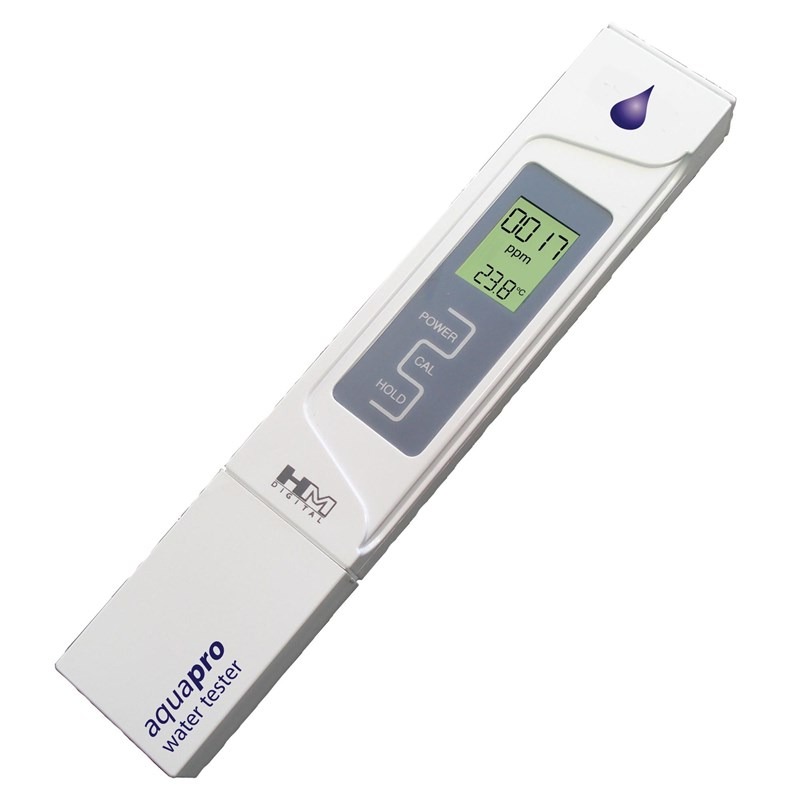Why You Need Pure Water for Water Fed Pole Cleaning
Water is a universal solvent, meaning it can dissolve and absorb molecules from a wide variety of sources. The amount of these dissolved inorganic and organic particles in water is referred to as the total dissolved solids, or TDS level.
High TDS can result from a variety of circumstances, from minerals in the water source, to chemicals used to treat in sewage systems, to runoff from road salts or fertilizers, and even from the pipes in your home. That’s why TDS levels vary not only from city to city, but even building to building.
Why is TDS important when using a water fed pole?
The higher the TDS rating of water, the higher the amount of inorganic solids that are dissolved in the water. When cleaning glass with a water fed pole, the water will evaporate, but the minerals that were that water will not. That’s what causes spotting.
How to test for TDS
A TDS meter is a quick and easy way to test for the amount of total dissolved solids in the water you’ll be using. For drinking water, the EPA’s secondary drinking water regulations recommend 500 ppm (parts per million) as the maximum amount of TDS. However, with window cleaning, anything above just 10 ppm needs to be filtered either using a DI system, or an RODI system.
You can check your water’s TDS easily with a TDS water tester. Simply remove the cap, turn it on, and stick the correct end in the water you’re going to be using. The TDS tester has an electrical probe in the bottom of it that runs electricity through the water. The easier the electricity can travel through the water, the more minerals it contains.
What is Deionization (DI) water purification?
One way to lower TDS is through deionozation (DI). The DI method runs water through specialized filters that can remove inorganic chemicals down to very small parts per million. These filters do this by exchanging positive contaminants like calcium with hydrogen molecules, and negative contaminant ions like iodine with negative hydroxl molecules.
A DI filter alone is enough to lower the TDS. However, the problem is that DI resin is expensive, and the replacement cost for DI resin may be too high to be cost-effective if you are dealing with high TDS water or with large projects..
What is Reverse Osmosis water purification?
Another way to lower TDS is through Reverse Osmosis (RO). Reverse Osmosis does the opposite of water’s natural osmosis process. For example, the body uses osmosis to get water into our cells, which means that the water molecules move across a semipermeable membrane from a less concentrated solution into a more concentrated one, thus equalizing the concentrations on each side of the membrane.
Reverse osmosis does the opposite. It applies pressure to the more concentrated (i.e., higher TDS) side of a semipermeable membrane, pushing the less concentrated side through, resulting in more purified water.
DI versus RODI: Which Do I Need?
The initial cost of a DI tank is quite a bit less than an RODI system. Again, DI resin is expensive, which is why and RODI tank may pay off in the long run.
With an RODI system, the water first runs through an RO filter, removing about 98% of the water's impurities. Then the rest of the water goes through a DI filter, greatly reducing the amount and cost of DI resin in the long run.
RO membranes can last quite awhile, especially is the water first runs through a pre-filter. This is a carbon and/or sediment filter that water runs through before reaching the RO filter. So when you hear the term "3-phase system," it's referring to a system with a pre-filter, then an RO filter, and finally a DI filter.
When choosing whether you need a DI tank versus an RO/DI tank, there are a couple of things to consider.
1. What is the average TDS of the water you’re working with? If your water is measuring at 150 TDS or higher, you’re probably going to be better off with an RO/DI system. Using RO not only filters better, it reduces the amount of DI resin needed.
2. How often will you be cleaning with pure water? If you’re only cleaning with a water fed pole once or twice per week, then you may be able to get by with a DI system alone, like the Unger Hydro Power Ultra, even if your TDS is higher than 150. If you’re going to be cleaning daily, however, an RO/DI is probably a more cost-effective option.
When choosing an RO//DI system, there are different models for different amounts of work. For example, we like the Pro Tool Eco Cart as an entry-level or residential RODI system. The Eco Cart 3-stage RODI cart is the best pure water bang-for-your-buck system out there.For larger projects of higher frequency of use, we recommend the H2PRO Max, which has the largest filters on the market, meaning you'll get longer life and more bang for your buck. This professional yet easy- to-use cart-based water purification unit offers great performance in a compact format. The commercial pump offers a boost in psi where water pressure is low.
Which System Do I Need?

- Good choice for those in areas with 150 TDS or lower
- Produces commercial grade zero TDS (Total Dissolved Solids) purewater for site glass cleaning and other applications that utilize deionized water.
- QuickChange Resin Canisters allow users to change resin in less than 30 seconds.
- FloWater Technology ensures more efficient water flow, improving resin efficiency and increasing its lifetime
- FastLock Opening for quick and easy opening and locking of the filter. Safe, self locking mechanism has a pressure release valve

The ECO 3 stage RODI cart is the best pure- water bang-for-your-buck system out today, and the perfect entry-level RODI option.
- 40in RO Membrane offers great water flow
- Easy to Replace Carbon Filter
- Large DI Resin Cartridge is Refillable
- Stainless Steel Construction
- Easy to Use, Simple to Maintain

This is THE best RODI cart for use with larger projects or regular use. Featuring largest filters on the market, you'll get longer life to help you stay more productive on the job. This professional yet easy- to-use cart-based water purification unit offers great performance in a compact format. The commercial pump offers a boost in psi where water pressure is low.
- 500% longer Carbon filter life for fewer changes
- Best 40"x 4" RO membrane flow in the industry
- 75% more Resin than most systems for longer filter life and lower Resin replacement cost


